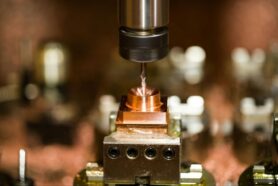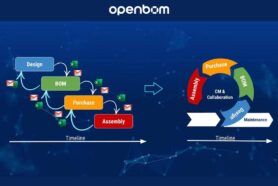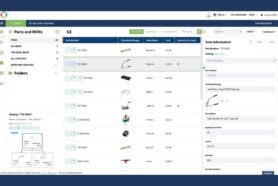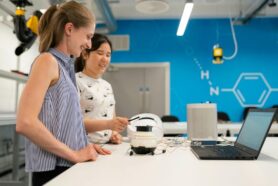
Effective communication with any partner, including your manufacturing partner, is the key to success. If you have clear communication then you feel like you are working towards a common goal.
However, communicating effectively with suppliers can pose unique challenges, especially in today’s globalized world. And if you fail to communicate effectively with your suppliers then you can feel broken and that the supplier is holding you back from growing.
Depending on where your supplier is located can cause certain difficulties with communication. For example, suppliers in China might not have access to WhatsApp and Google because of certain restrictions. Something as basic as this might cause some uneasiness with how you work with suppliers.
In this blog, we’ll explore 5 tips to overcome these communication challenges and enhance communication with your suppliers. From understanding cultural nuances to leveraging alternative communication channels and digital tools, we’ll provide practical tips to help you foster stronger relationships and drive business success through effective supplier communication.
Tip 1: Understand Cultural Differences
Effective communication with suppliers requires an understanding of their cultural and business practices. By acknowledging and respecting these cultural differences, businesses can forge stronger relationships and navigate potential challenges more effectively.
Cultural differences influence every aspect of communication, from the choice of words and tone to non-verbal cues and gestures. Ignoring or misunderstanding these nuances can lead to misinterpretations, conflict, and ultimately, hindered collaboration with suppliers. Recognizing and respecting cultural differences is therefore key to building trust and fostering successful partnerships.
If you are speaking with a new supplier in a new region then you should consider the following:
- Research Cultural Norms
- Adapt Communication Styles
- Be Mindful of Language Barriers
Tip 2: Enable Transparent Communication
Open and transparent communication serves as the foundation of trust and collaboration between businesses and their suppliers. By creating an environment where both parties feel comfortable expressing their needs, concerns, and ideas, organizations can foster stronger relationships and drive mutual success.
Openness and transparency builds trust and credibility in supplier relationships. When both parties are forthcoming and honest in their communication, it creates a foundation of reliability and integrity, reducing the likelihood of misunderstandings or conflicts. Additionally, open communication encourages transparency in decision-making processes, fostering a sense of partnership and shared goals.
Here is why open communication is beneficial when working with your supplier:
- Builds Trust and Credibility
- Enhances Collaboration
- Improves Problem-Solving
- Facilitates Innovation
- Reduces Risks and Uncertainty
Tip 3: Establish Clear Communication Protocols
Clear communication protocols and guidelines are essential for fostering consistency, clarity, and efficiency in interactions with suppliers. By establishing clear expectations and procedures, businesses can minimize misunderstandings, streamline communication processes, and resolve issues effectively.
Clear communication protocols provide a framework for effective communication between businesses and their suppliers. They outline the channels, expectations, and procedures for exchanging information, making decisions, and addressing concerns. By establishing these protocols upfront, organizations can prevent confusion, reduce errors, and maintain alignment with their suppliers.
In addition to clear communication, proactive communication is important to ensure that both parties remain informed and aligned throughout the partnership. By establishing clear communication protocols, businesses can minimize delays, mitigate risks, and strengthen relationships with their suppliers, ultimately driving success in their collaborative endeavors.
Tip 4: Move Away from Emails
While email has long been a staple in business communication, its limitations in terms of efficiency, clarity, and responsiveness are increasingly evident in today’s fast-paced and interconnected world. Transitioning away from reliance on email toward more interactive and real-time communication channels offers numerous benefits for businesses and their relationships with suppliers.
If you are moving away from emails then there needs to be something to replace it. Welcome digital tools.
Tip 5: Offer Digital Tools for Collaboration
In today’s interconnected world, leveraging digital tools and platforms is essential for streamlining communication and collaboration with suppliers. By embracing technology, businesses can enhance efficiency, transparency, and effectiveness in their interactions with suppliers, ultimately driving productivity and fostering stronger partnerships.
Some of the benefits of offering digital tools to your suppliers are the following:
- Streamlined Communication
- Enhanced Efficiency
- Improved Transparency
By leveraging digital tools for collaboration, businesses can optimize communication processes, improve efficiency and transparency, and build stronger relationships with their suppliers. Embracing technology empowers businesses to stay agile, competitive, and resilient in today’s rapidly evolving marketplace.
Conclusion
Effective communication with suppliers is a cornerstone of successful business operations and fruitful partnerships. In today’s globalized marketplace, navigating cultural differences, technological limitations, and communication challenges requires proactive strategies and innovative solutions. Throughout this blog, we’ve explored various tips and techniques to enhance communication with suppliers, from understanding cultural nuances to leveraging digital tools for collaboration.
If you are interested in seeing how OpenBOM can help you communicate with your suppliers? Reach out. We would be happy to show you.
By: Jared Haw
Join our newsletter to receive a weekly portion of news, articles, and tips about OpenBOM and our community.











